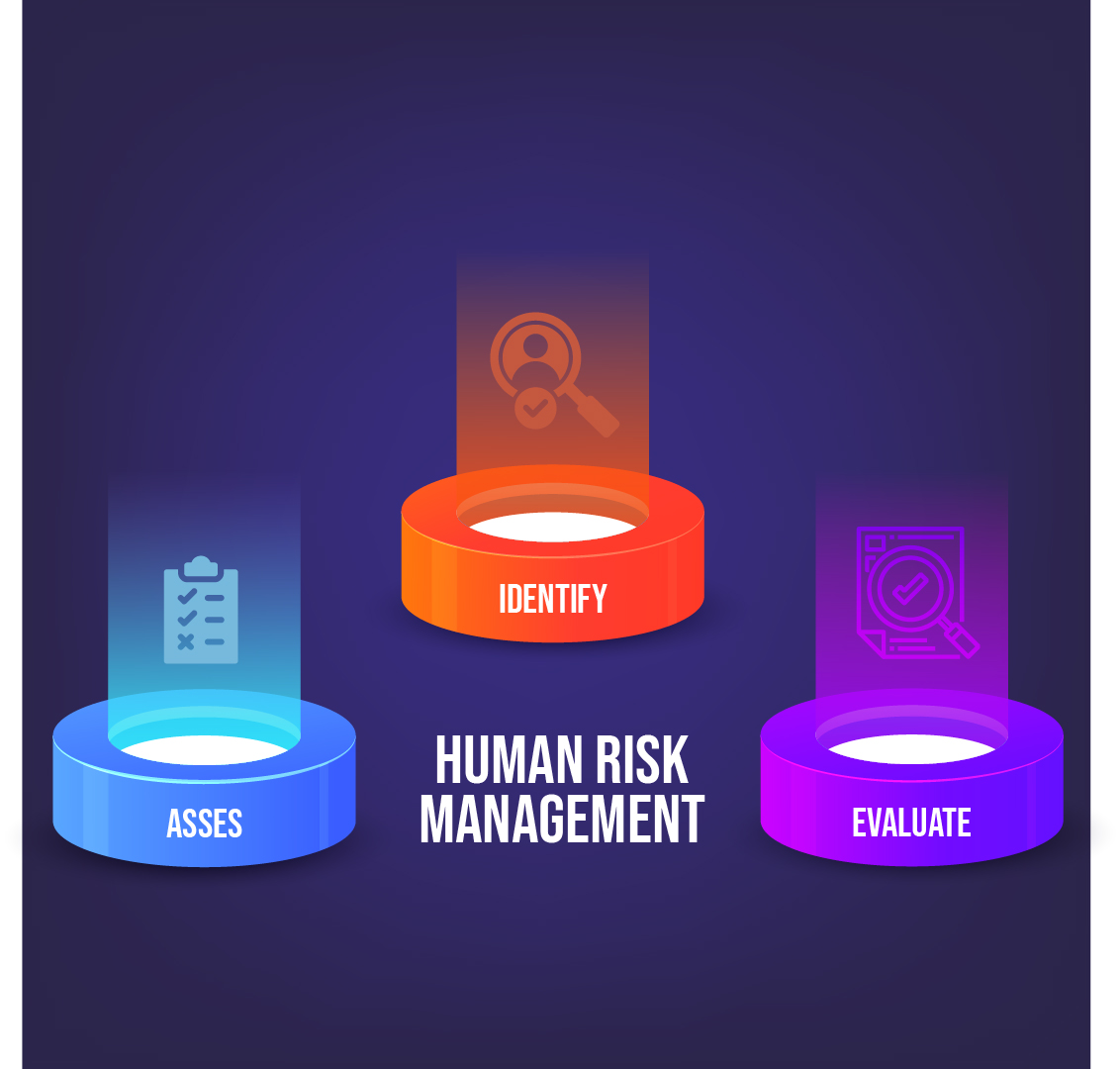Organizations are upgrading their infrastructure and training mechanisms with advanced technologies to cater future needs. To meet these standards, there is a need to implement proper cybersecurity posture and provide security awareness training to the employees and protect them from breaches and hacking activities. Launching security awareness training programs can help in empowering employees to tackle modern cyberattacks. To reduce security issues, there is a need to focus on implementing human risk management. By using the HRM approach, organizations can prioritize the human factor in adding an extra layer of security. Also, using the methodology of people security awareness to empower employees and be ready against social engineering and email attacks.
Table of Contents
ToggleWhat is Human Risk Management (HRM)?
HRM changes the way traditional methods and solutions work. It focuses on identifying, evaluating and addressing the risk involving human factors which are responsible for cyberattacks. Measuring outcomes and reducing security risks are the major approaches used in human risk management to prepare and apply mitigation strategies. Companies can empower employees by focusing on technical elements as well as human factors.

Providing cybersecurity training and educating employees on modern simulations and training platforms can help to highlight the ideology of people security awareness as the first line of defense. Training and learning curvature should be designed in such a way that it can meet the needs of diverse workforce and deliver department specific needs. Behavior analysis and understanding the needs of people is very important in targeting proper security agenda and establish a safe and secure workplace.
The Impact of Human Factors in Cybersecurity
- Even the most advanced security systems can be affected and compromised by human error.
- Falling for phishing emails and using weak passwords are also due to human errors.
- According to research by Sangfor, 82% of security breaches involve human elements which highlights the need for better management.
- Lack of proper security awareness among employees can increase security risk and lead to falling in phishing and social engineering attacks set up by hackers to steal organization’s confidential data.
- Insider threats either intentional or unintentional can pose a major security risk which requires additional security measures to ensure proper security.
Need for Human Risk Management in Establishing a Security Culture
Prevent Human Error
- There is a need to address the factor of human error which is the major cause of security breaches.
- Companies need to train employees on dummy simulations of various cyberattacks to make them apply mitigation strategies when encountering real-life security breaches.
Empowering Employees
- HRM helps in empowering employees for threat detection and its reporting process.
- It transforms employees from being vulnerable to becoming reliable protectors against cyber threats.
Reduce the Chance of Insider Threats.
- Organizations should conduct human risk assessments to identify employees who are vulnerable to potential threats.
- There is a need to address accidental or insider threats to reduce the chances of being affected by social engineering and phishing attacks.
Tailored Training and Learning Approach
- Organizations need to apply the HRM approach and move beyond traditional training to provide role-specific training to the employees to cater department-specific needs.
- Providing training against dummy simulation attacks and giving interactive scenario-specific learning modules, can help in increasing the knowledge retention rate of employees.
Encouraging Accountability
- HRM helps in promoting the importance of individual responsibility among the employees to ensure best security practices are followed.
- Employees should understand their accountability for protecting confidential data and comply with security standards set up by the organization.
Using Advanced Technology to Enhance HRM Practices
- Using advanced cybersecurity solutions can help in optimizing HRM by automating threat detection systems to get real-time alerts and monitor employees activity towards security.
- Use of security awareness platforms and integrating with the HRM system helps in identifying trends and patterns in employees activities which might indicate the cause of security lapses. Also, helpful in applying mitigation strategies.
Scope of Continuous Improvement and Adaptation
- HRM is a continuous and evolving process, so implementing regular security assessments with training programs helps in ensuring best security practices against new upcoming threats.
- Taking necessary feedback from employees regarding training and learning helps in improving security posture.
Book a Free Demo Call with Our People Security Expert
Enter your details
Threatcop’s Approach for Effective Human Risk Management
- TSAT (Threatcop Security Awareness Training)
Helps in providing simulations against multiple attack vectors such as phishing, smishing, vishing, QR code Scams, ransomware attacks, attachment-based attacks, and WhatsApp phishing.
- TLMS (Threatcop Learning Management System)
Offers an interactive approach to educate users with comprehensive and engaging formats such as videos, infographics, posters, wallpapers, cyber comics, newsletters, etc.
- TDMARC ( Threatcop Domain-based Message Authentication, Reporting and conformance)
It safeguards organizations against phishing and BEC attacks with advanced features like smart SPF, DKIM, and BIMI management to protect confidential data.
- TPIR (Threatcop Phishing Incident Response)
Simplify reporting and responding to email and WhatsApp-based threats with one click, preventing credential theft, malware, and business disruptions.
Conclusion
Human risk management is a necessary aspect of ensuring the security posture of an organization. There is need to train employees according to security requirements. Insider threats and human errors need to be addressed carefully as a single mistake could lead to a huge compromise of data and financial loss. By providing proper training and educating employees about modern cyber threats, organizations can reduce data breaches and cyberfraud. Organizations can use Threatcop’s advanced solutions to fulfill all of their cybersecurity needs and be ready against upcoming cyber threats. Integrating HRM in security posture helps organizations to add an extra layer of security and be future-ready against upcoming cyberattacks.

Technical Content Writer at Threatcop
Milind Udbhav is a cybersecurity researcher and technology enthusiast. As a Technical Content Writer at Threatcop, he uses his research experience to create informative content which helps audience to understand core concepts easily.
Technical Content Writer at Threatcop Milind Udbhav is a cybersecurity researcher and technology enthusiast. As a Technical Content Writer at Threatcop, he uses his research experience to create informative content which helps audience to understand core concepts easily.
